The map of London that took 10 years to complete
- Published

The map, called London Town, measures 116cm x 91cm and is drawn entirely in pen
A map of London that has been 10 years in the making is about to go on show in the latest exhibition at the Royal College of Art. According to the artist behind the work, Fuller, looking at his creation is like trying to "skim-read a magical surrealism book".
Crammed full of life - featuring streets and buildings but also ladies under lampposts, the final resting place of Alan Turing and even planes and drones - London Town is a personal interpretation of the capital, referencing the booming heartbeat of its financial core and the tragedy of the 7 July bombings.
"It's all a bit overwhelming, really," Fuller said, handing London Town over to the RCA. "I'm considered an outsider of the art world."
When the artist - real name Gareth Wood - first put pen to paper in 2005, London was soon to win the Olympic bid, but the high of that victory was immediately punctured by the despair of 7/7.
He said: "Some of the stories in there are highly personal: a girl I knew was unfortunately killed in the London bombings, but it's not something that others wouldn't have experienced."

"As an artist I find it almost a duty to document," says Fuller
Before the creative work could begin, Fuller trudged the streets of London seeking inspiration, taking photographs and making videos, and spent hours in libraries poring over maps
"After this intense research I begin drawing," he said.
"Sometimes I'll just go ink to page, but with major landmarks sometimes I'll pencil them first to get an accuracy.
"Certain things are very much where they are plotted but it's not geographically precise.... and there's only so much that can go on to the map.
"You won't find Buckingham Palace on it, but if you look you will see Kensington Palace because there was space for it to go there to reference the royal heritage."
Acquired by the British Library for its contemporary map collection, in terms of cartography London Town is "actually quite accurate", according to the artist.
Tom Harper, curator of antiquarian mapping at the British Library, described the work as "one of the most personal pieces of cartography I've ever seen" and said it would be held alongside works by other contemporary artists including Grayson Perry.

Four highlights of the map, as described by Fuller:
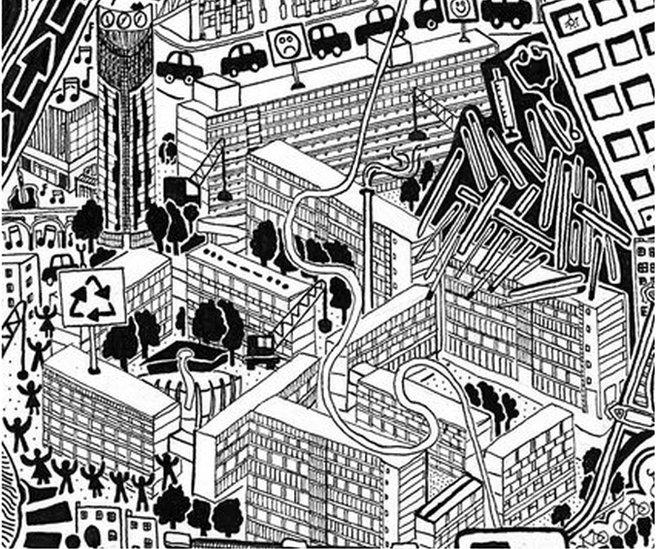
The Aylesbury Estate in Camberwell is Europe's largest social housing development. Its brutalist design has a dramatic effect on visitors but this established community is battling daily with their uncertain future. I spent a short time documenting conversations with locals and photographing estates in south London. These vast housing complexes provoke fond memories from childhood, urban exploring and playing out with friends.
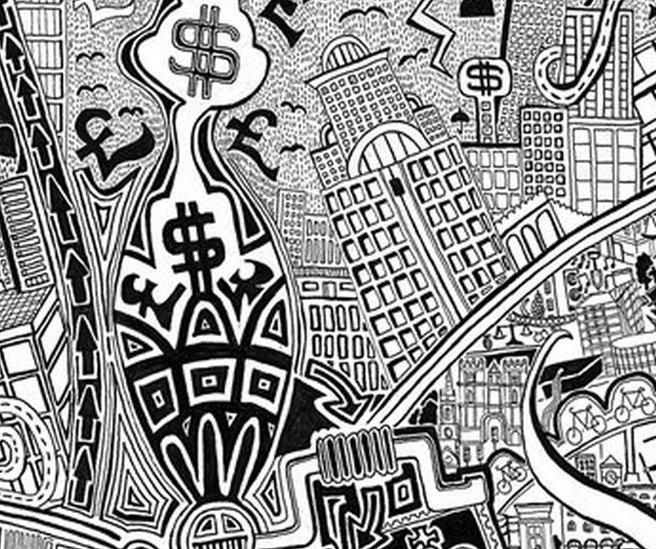
The City is a crucial beating pulse. Its international workforce is connected through hyper-speed trading and from here London's global recognition in finance unfolds daily. It was many years ago that I watched traders on the LIFFE exchange by Cannon Street. Each would wear their own coloured jacket and were quicker than ninjas using signals to make deals. I delivered coffees as a work experience runner. The sheer buzz that belongs to the square mile is unique.
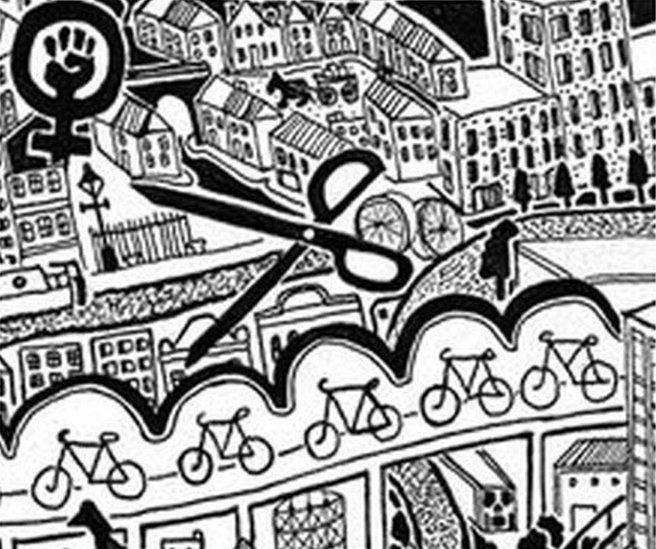
The Cycle Superhighway weaves its way through Docklands above the new Island Development. The notion of raised bike routes seems less conceptual and maybe a necessity as urban planners hit melting point for space and cohesion across the city. The suffragettes symbol proudly pokes out in memory of the work done by Sylvia Pankhurst and activist history in the east of London.
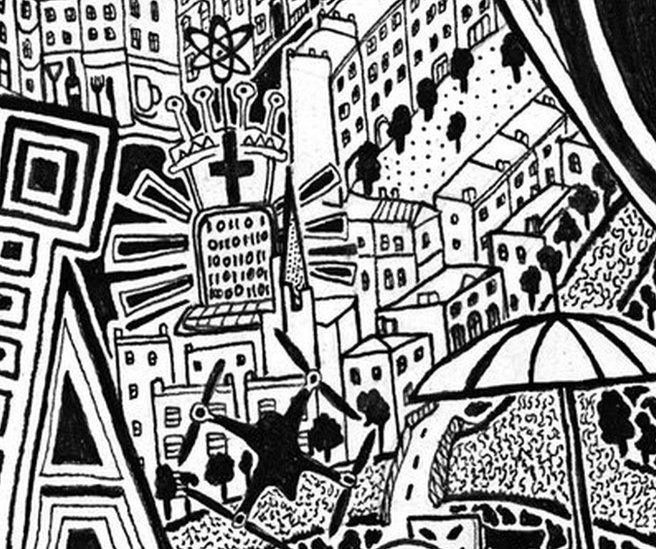
Nestled in west London is the picturesque stretch of Little Venice. Just a little north is the Colonnade Hotel, the birthplace of Alan Turing, the pioneering computer scientist. I've drawn a fictitious tomb inscribed with binary code - the very least I could do.

As well as charting what he sees now, Fuller also thought about the future of the capital, studying its 2020 Vision, external to see how the city could change.
"I was working with developers like Cathedral Group and they were brilliant in helping me. Then there's Crossrail and Crossrail 2 in the map, which hasn't been started yet, so I try and look into the future.
"There are drones added to the map but it also drifts across time because there are ladies under lampposts in Fulham, because in the 18th Century it was rife for gambling and naughtiness.
"There's so much in there, it's a little like trying to skim-read a magical surrealism book."
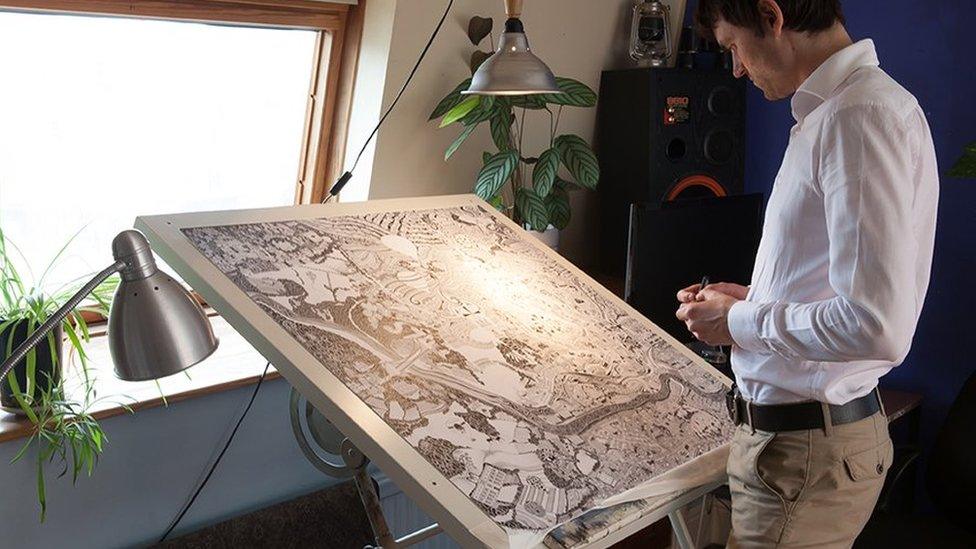
Fuller has previously created a map of his home city of Bristol (pictured), but the UK could be left behind as he looks abroad for future mapping projects
As for London Town's worth Fuller claims he has not given much thought to it and has no intention of selling "unless someone wants to make a ridiculous offer". A print of the map costs £3,000.
He said: "I'm hoping to keep hold of all the originals for a solo show in a decade or so, so I can just take them out of boxes and put them on the wall."
Now he has completed his 10-year labour of love, Fuller is looking beyond the UK for his next project.
He said: "There are plans to start drawing a new place in early 2016. It's undecided where exactly, but I have a wish list. I would like to do some of the South American cities in the future. The US would be really interesting, although the most likely at the moment is Barcelona."
Wherever it may be "as an artist I will put my heart and soul into getting under the skin of the city", he says.
"I'm trying to push the boundaries with the craft and hopefully I've done that and personalised it enough - I've put myself out there in a huge life documentary."
London Town is on display in the Flux Exhibition at the Royal College of Art from 11- 14 December.
- Published8 April 2014

- Published24 February 2014
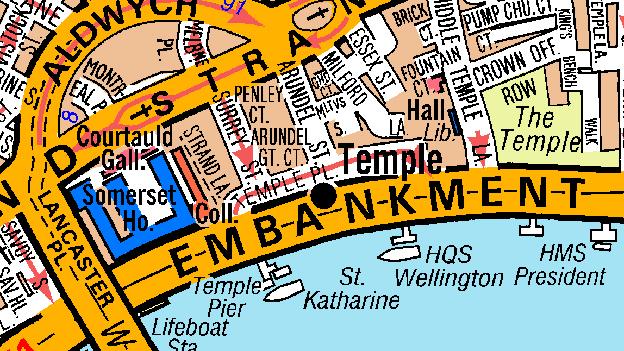
- Published26 May 2013
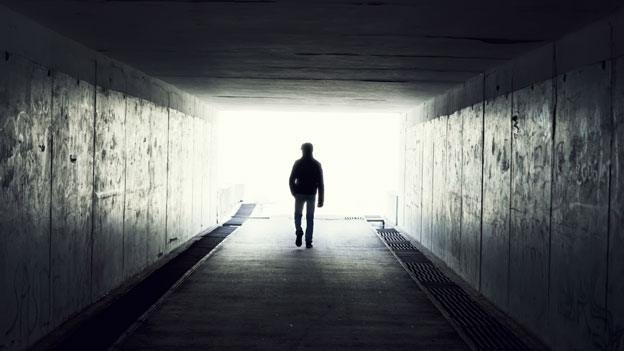
- Published12 October 2012
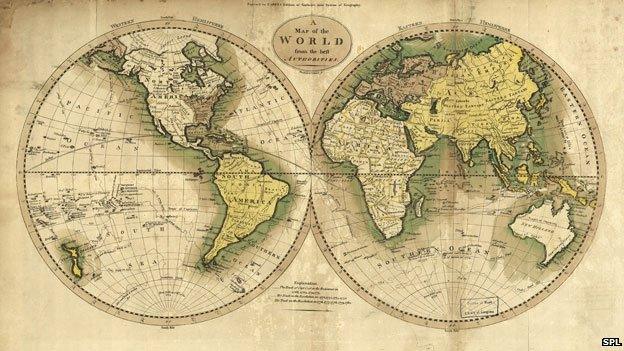
- Published24 March 2011